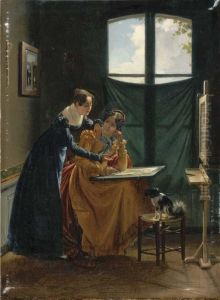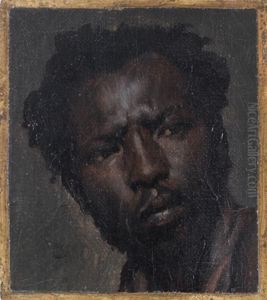Leon-Mathieu Cochereau Paintings
Leon-Mathieu Cochereau was a French painter born on October 26, 1793, in Paris, France. His brief life was marked by his remarkable talent and contribution to French art during the early 19th century. Raised in an era marked by significant political turmoil and change, particularly the aftermath of the French Revolution and the Napoleonic Wars, Cochereau's work was inevitably influenced by the tumultuous times in which he lived.
Cochereau demonstrated artistic promise at an early age. He trained under the French painter Jacques-Louis David, who was the preeminent painter of the neoclassical style and a significant influence on young artists during that period. Under David's mentorship, Cochereau honed his skills and developed a strong foundation in the neoclassical style, which emphasized clarity, order, and harmony, as well as subject matter drawn from classical antiquity.
Despite his promising career, Cochereau's life was cut short at the age of 24. He died on February 17, 1817, in Rome, Italy. During his short career, Cochereau produced a number of historical and mythological paintings, portraits, and sketches. Although he did not live long enough to fully establish his reputation, his works were well-regarded by his contemporaries, and he was seen as a talented artist who had the potential to become one of the leading figures in French art.
Cochereau's works are characterized by their attention to detail and their embodiment of the neoclassical ideals. His premature death meant that his oeuvre was limited, but what remains is a testament to his skill and potential. His paintings can be found in various collections and museums, offering insight into the artistic trends and cultural context of his time. Leon-Mathieu Cochereau's legacy, while modest in comparison to his mentor David, is still appreciated by art historians and enthusiasts for its contribution to the neoclassical movement in French art.

